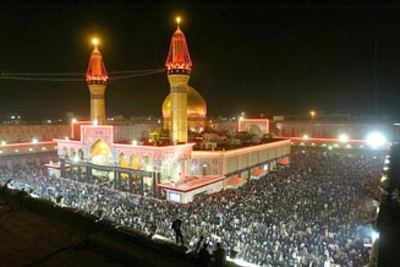  
|
|
The Crimes at Palmyra
by Stephen Schwartz and Irfan Al-Alawi http://www.islamicpluralism.org/2510/the-crimes-at-palmyra
The world, and especially moderate, traditional, spiritual, conventional and even conservative -- but few radical -- Muslims have watched in dismay as the spurious "Islamic State" (ISIS) has undertaken the systematic destruction of the pre-Islamic monuments at Palmyra in Syria. ISIS terrorists have blown up ancient temples that were designated as a World Heritage Site by the United Nations Educational, Scientific, and Cultural Organization (UNESCO) in 1980.
The pretext for these despicable acts is, according to ISIS, that preservation of global cultural heritage encourages "idol-worship." That is absurd. The religion for which most of the structures at Palmyra were built no longer exists. ISIS and those like it attacked the World Trade Center in New York on September 11, 2001, using the same rhetoric. The WTC was, according to Al-Qaida, a symbol of the worship of money. ISIS and its inspirers and imitators do not limit their thirst for annihilation to pre-Islamic or non-Muslim culture or religion. They have levelled spiritual Sufi and Shia Muslim monuments, again with the claim that the wreckers are combatting idolatry.
Western media have treated this terrible development in the Syrian war in a peculiar way. Reporters and commentators refer to ISIS as hewing to "a violent interpretation of Islamic law." That is, additionally, absurd. If Islamic law called for the elimination of cultural heritage no preexisting architecture would have survived in Muslim-ruled lands. The age-old pre-Muslim legacy from the Egyptian Pyramids to the temples of Indonesia would have disappeared. While some non-Muslim religious structures were converted to Muslim use through history (such as Hagia Sophia in Istanbul) they were not torn down. ISIS and its condemnation of "idolatrous" cultural heritage are products of an ideology, not a religious conception. The name of this nightmare vision, which appears seldom in Western media, is Wahhabism. The "W" word seems prohibited from most discussion of ISIS. Why we cannot say. Wahhabism is not a school of Islamic law, but the liquidation of Islamic legal precedents and their substitution by naked force. Further, Wahhabism is neither traditional nor conservative. It emerged only 250 years ago from the deserts of central Arabia. A more accurate analysis of the ISIS drive toward extinction of everything that went before it appeared in a drawing by Banx, the editorial cartoonist of the London Financial Times (unfortunately unreproducible) showing two ISIS fanatics, dressed in black, blowing up the Palmyra complex. One says, "I prefer the modern." While the cartoon was intended as a joke, it is worthy of serious thought. ISIS and others believe they are purifying Islam, and the apologists for Wahhabism argue that its domination in the Kingdom of Saudi Arabia, where it formed a marriage relationship between Wahhabi clerics and the royal family, has enabled the emergence of a more contemporary, scientific, and rational Islam.
The KSA cannot be blamed for ISIS; the Saudi rulers see clearly that the evil spirit that metastasized out of Wahhabism threatens them as much as it does the rest of the world. But harbingers of the extirpation of Palmyra are found in Saudi history. In 1801, the Saudi-Wahhabis sacked the Shia shrines at Karbala in Iraq. Soon they repeated their hateful eradication and carnage in Mecca and Medina, the two holiest cities for Muslims. By 1818 they were driven out of Mecca and Medina, as well as their original nest in central Arabia, by Mehmet Ali Pasha, the reforming Ottoman ruler of Egypt.
But the Wahhabis returned, and took power in Mecca and Medina, as well as central Arabia, again in 1924-25. Among their earliest actions, they demolished the graveyards of Jannat Al-Mu'alla in the former city and Jannat Al-Baqi in the latter. Jannat Al-Mu'alla sheltered the remains of numerous family members of Muhammad, and Jannat Al-Baqi similarly housed the tombs of many of the Prophet's Companions. But since strict Wahhabism - ISIS-style - prohibits praying at any mausoleum, even that of Muhammad, the cemeteries were reduced to flat spaces with small, blank tablets. So they remain today.
Western media and ISIS together seem ignorant of an important aspect of the legend of Palmyra. In Roman times, the city was known as a center of rebellion, under its queen Zenobia. Much has been written, in West and East alike, in recent centuries, celebrating Zenobia, Palmyra, and their resistance to tyranny. Previous destruction at Palmyra by Muslims was political, not theological in origin. The same is true today. And as the Roman and other oppressors were opposed by force of arms, Palmyra can only be saved by action against ISIS and against the Syrian dictatorship of Bashar Al-Assad. They are the new tyrants and their utter defeat is, we believe, the only proper Islamic response to their horrors.
Related Topics: Albanian Muslims, American Muslims, Balkan Muslims, Bektashi Sufis, Bosnian Muslims, British Muslims, Deobandism, Dutch Muslims, European Muslims, French Muslims, German Muslims, Indonesia, Iraq, Irfan Al-Alawi, Kosovo, Kurdish Islam, Macedonia, Muslim Brotherhood, Muslim-Christian Relations, Muslim-Jewish Relations, Saudi Arabia, September 11, Shariah, Shiism, Sufism, Takfir, Terrorism, Turkish Islam, Wahhabism, WahhabiWatch receive the latest by email: subscribe to the free center for islamic pluralism mailing list |
Related Items Latest Articles |
|||||||||||
|
© 2025 Center for Islamic Pluralism. home | articles | announcements | spoken | wahhabiwatch | about us | cip in the media | reports external articles | bookstore | mailing list | contact us | @twitter | iraqi daily al-sabah al-jadid |
||||||||||||







